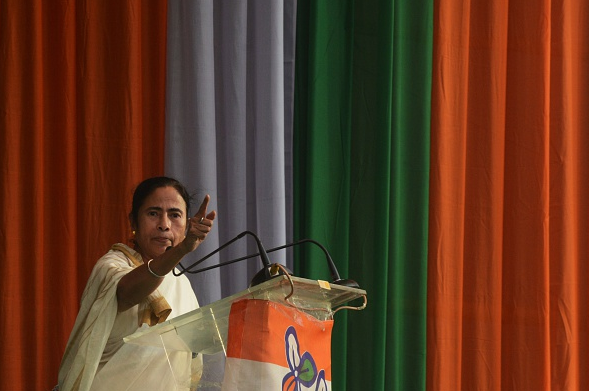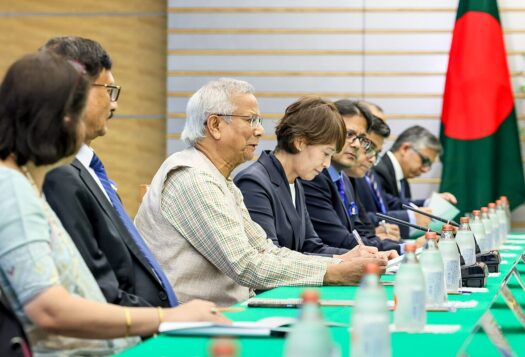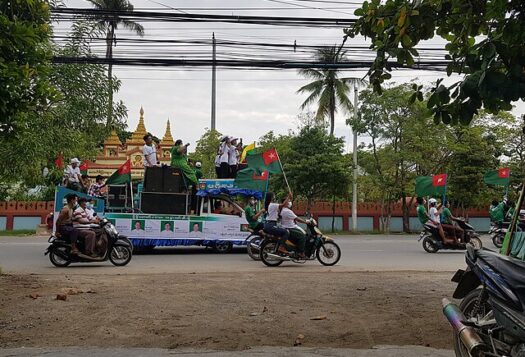
As elections in West Bengal begin today, with Tamil Nadu not far behind, the ruling Bharatiya Janata Party (BJP) is making efforts to expand its base beyond its traditional stronghold. Such efforts are required—the BJP must register a presence in these states to increase its representation in the Rajya Sabha (upper house), which will help the Modi government pass key reform legislation. However, making a mark will be difficult for the BJP, since it’s regional parties that have traditionally ruled these states. The Indian National Congress and the Left Front may also struggle to capture the attention of West Bengal and Tamil Nadu. All things considered, if BJP loses these states, it may complicate the party’s road to the 2019 general elections.
West Bengal
The West Bengal elections are to be held in six phases, starting today and ending May 5. A significant development is the addition of new voters following the exchange of border enclaves with Bangladesh. This election is crucial for the BJP to continue to cement its presence in Bengal. At a minimum, the party hopes to retain its 2014 general assembly vote share of 17 percent that resulted in two seats. After two major blows in the Delhi and Bihar assembly elections, winning—or at least making substantial inroads—is important for BJP’s image. The Bengal elections are also pivotal for the Left Front to rediscover its lost identity—especially following their vote share plummeting from 43 percent in 2009 general elections to 29 percent in 2014 (also see Graph 1). It was the first time that the Left Front witnessed such a setback after decades of electoral dominance in Bengal.
Graph 1: Vote share of parties in Lok Sabha 2014 and Assembly Elections 2011 in West Bengal (in percentage form)
Source: Indiavotes.com
The Bengal constituency has 294 seats in its assembly and presently, the All India Trinamool Congress (AITC) is in adequate majority, making it the most powerful political party in the state. The Indian National Congress (INC), popularly called the Congress, has also shrunk to only a few pockets. Recently, the Left Front and the Congress have come to a mutual understanding to mount a challenge against Mamata Banerjee’s AITC. However, this brings its own set of problems. It not only goes against the political and ideological positions of the parties, but will also affect their chances in Kerala where the parties are contesting against each other in May. The puzzle is whether Mamata Banerjee will be able to secure a majority like she did in the 2011 elections, winning 40 percent of the vote with 184 seats, or whether the Congress and the Left Front’s pact will ruin her chances.
Whether the recent blow to AITC—a sting operation where party officials were caught taking a bribe on camera—will affect the party’s prospects remains to be seen. That and the unofficial alliance between the Congress and the Left Front may just decide the outcome of Bengal’s state assembly elections.
Tamil Nadu
The Tamil Nadu elections—to be held on May 16 for 234 constituencies—are interesting for a variety of reasons. Regional parties play a very prominent role in this state, with little to negligible attention given to national parties. Thus, national parties have to ally with regional parties to have a fighting chance. This year, All India Anna Dravida Munnetra Kazhagam (AIADMK) may possibly have an electoral arrangement with BJP. While Dravida Munnetra Kazhagam (DMK)—another prominent regional party—has formed an alliance with Congress. In the last five years, the electorate in Tamil Nadu has increased by 26 percent and the polling stations have also increased by 21.5 percent. This could strengthen the anti-incumbency sentiment. Tamil Nadu has never had a coalition government and this year seems to be a contest between multiple regional players: AIADMK-BJP, DMK-Congress, the Desiya Murpokku Dravida Kazhagam (DMDK) and People’s Welfare Front (PWF) alliance, and Pattaali Makkal Katchi (PMK).
Graph 2: Vote share of parties in Lok Sabha 2014 and Assembly Elections 2011 in Tamil Nadu (in percentage form)
Source: Indiavotes.com
However, the result seems predictable in this election too, with Jayalalithaa, current Chief Minister of Tamil Nadu and the face of AIADMK, likely to come to power. Jayalalithaa, popularly known as Amma or mother, has offered a variety of schemes to attract the poor and downtrodden like “Amma Salt” and “Amma Mineral Water,” in a way creating a separate set of electorates in her favor. A CVoter and India TV survey predicts 116 seats for AIADMK, compared to 203 seats in 2011. AIADMK may likely have its first transgender candidate, further opening up space for more electorates to vote for or join the party.
Conclusion
The winner of the elections in these two states seems predictable. However, whether BJP will have any impact—as it has had in the previous Lok Sabha election—and whether the Left Front can revive itself will be storylines of note on May 19. BJP is in the minority in the Rajya Sabha, members of which are elected by the representatives of the state assemblies. The party does not have a single MLA in Rajya Sabha from Tamil Nadu or West Bengal. Therefore, winning these elections becomes crucial for the BJP to move forward with the implementation of its reform agenda.
***
Image: Diptendu Dutta-AFP, Getty




